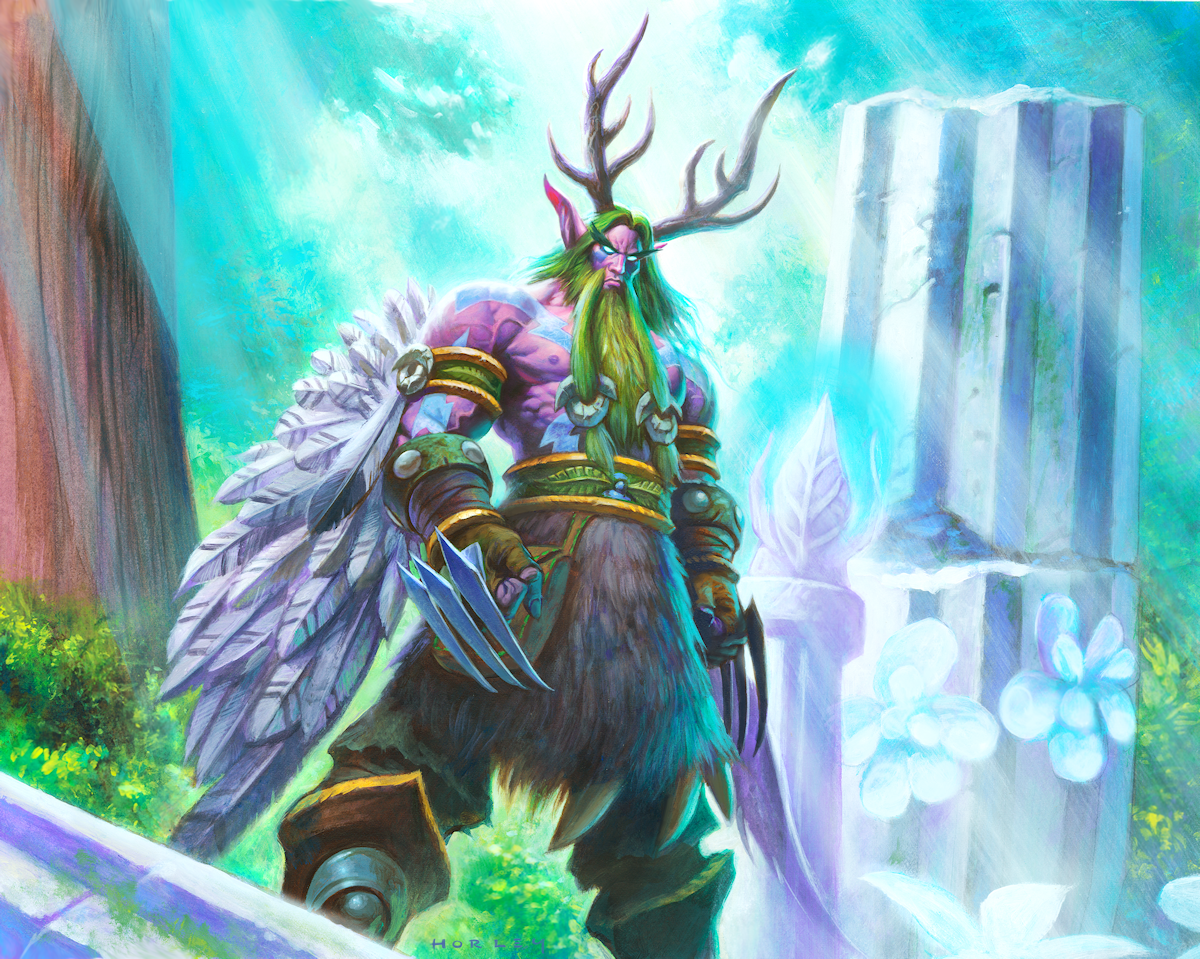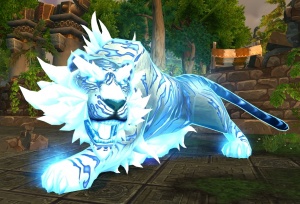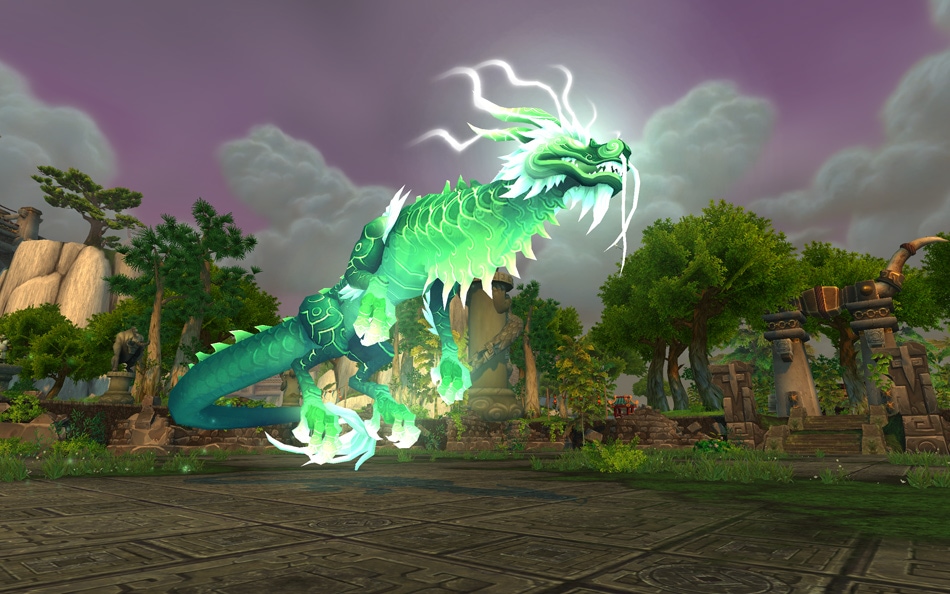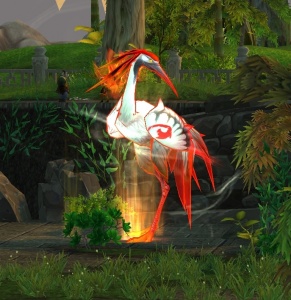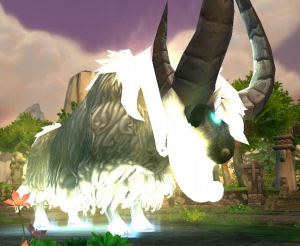This week we're going to be taking a look at the religion of the night elves. One of the older races in Azeroth, the night elven kingdom at one point spanned most of the world. Ruins of their architecture can be seen on almost all of the continents, including statues and temples honoring their pantheon.
Originally the night elves were not called the night elves, because there was no need for the distinction. The night elves and the blood elves in today's Azeroth both stem from the same ancient civilization, a race of elves who called themselves the Kaldorei. This beautiful word means “the children of the stars,” showing that from the very get go elves were fascinated by celestial matters.
While there are a number of being on the elven pantheon, the most prominent is the goddess known as Elune. If the elves are the children of the stars then Elune is their mother moon, lighting their way and guiding them towards paths of peace. There are two moons within the sky of Azeroth, and Elune is associate with the larger of the two, called the White Lady.
Elune watches over her children and
protects them. She is a goddess of peace, mercy, and healing. All
living things are under her protection, and her goal is to spread
harmony amongst the different races of Azeroth.
Those who worship Elune are gifted with some of her powers - healing, the ability to call down powerful beams of moonlight upon their enemies, and even the ability to raise the dead.
While Elune is worshipped by almost all night elves, there was a time when she was served by only females. Rituals to Elune were performed by priestesses. Male Kaldorei often turned to the earth and nature instead, becoming druids (heavily based upon Celtic myths) and revering the demigod known as Cenarius. In more recent years both orders have opened up their ranks, allowing men to serve Elune as priests, and women to become druids in their own right.
The current center for worship of Elune is the Temple of the Moon, located in the night elf capitol of Darnassus.
Those who worship Elune are gifted with some of her powers - healing, the ability to call down powerful beams of moonlight upon their enemies, and even the ability to raise the dead.
While Elune is worshipped by almost all night elves, there was a time when she was served by only females. Rituals to Elune were performed by priestesses. Male Kaldorei often turned to the earth and nature instead, becoming druids (heavily based upon Celtic myths) and revering the demigod known as Cenarius. In more recent years both orders have opened up their ranks, allowing men to serve Elune as priests, and women to become druids in their own right.
The current center for worship of Elune is the Temple of the Moon, located in the night elf capitol of Darnassus.
Elune's current high priestess is also the leader of the night elves, a woman by the name of Tyrande Whisperwind. Tyrande has served Elune faithfully for hundreds of years, beginning during her early years as a priestess when the demonic army known as the Burning Legion first invaded Azeroth.
Interestingly enough, Tyrande's consort Malfurion is the leader of the night elven druids.
(Much like their inspiration from the Celtic myths, druids in WoW are able to shapeshift into various creatures. Something different happened to Malfurion during a druidic sleep, and he wound up merging his natural form with those of many different animals.)
The relationship between the Kaldorei followers of Elune and the path of druidism is fascinating to me. I mentioned that those who become druids revere the demigod Cenarius? Well, Cenarius is actually the son of Elune, tying druids and priestesses intrinsically together. His father is Malorne, an ancient stag who belongs to the group of deities known to the night elves as the Wild Gods. (These same beings are known to the trolls as Loa and to the pandaren as the August Celestials.) To tell you the story of the courtship of Elune and Malorne, I first need to take a look at another culture in the World of Warcraft.
There's another race within WoW called the tauren. The night elves sided with the Alliance, and the tauren with the Horde, but both are immensely respectful of nature. They were the two first races in WoW to have druids as a playable class. I was fascinated when looking into their mythology to discover that the tauren and the night elves both worship Elune, Malorne, and Cenarius...albeit under different names. Despite the name differences, the deities are pretty much the same in both cultures.
To the tauren, Elune is known as Mu'sha. The Wild God Malorne is called Apa'ro. In tauren tales Apa'ro ran from the tauren (called the Shu'halo) upon the earth and fled to the sky. He became trapped in the stars, and could not set himself free. Mu'sha saw him there and fell in love with Apa'ro. The moon goddess offered to set him free, if he would give her his love in return. Apa'ro agreed, and the two became consorts.
To the tauren, Elune is known as Mu'sha. The Wild God Malorne is called Apa'ro. In tauren tales Apa'ro ran from the tauren (called the Shu'halo) upon the earth and fled to the sky. He became trapped in the stars, and could not set himself free. Mu'sha saw him there and fell in love with Apa'ro. The moon goddess offered to set him free, if he would give her his love in return. Apa'ro agreed, and the two became consorts.
Their offspring was Cenarius, a being who made nature his home. He trained many of the night elves, including Malfurion Stormrage, to become druids. In fact, early on in Kaldorei history both Tyrande, Malfurion, and the night elf named Illidan Stormrage were pupils of Cenarius. Each would go on to walk their own unique path - Tyrande becoming High Priestess of Elune, Malfurion the leader of the druids, and Illidan...something darker.
There has been speculation for some time amongst some Warcraft players that Elune is, in fact, a naaru - one of the ancient beings of Light worshipped by the draenei. Elune herself has never been seen; only her light, and the peaceful, uplifting feeling that surrounds her. This is similar to the sensations experienced by those who are around the naaru. It's a very interesting theory, and one that I'm enjoying reading into more closely. If you'd like to take a closer look, check out this link.
Be she Elune or Mu'sha, naaru or other deity, I'm quite fond of the night elven goddess.
What do you guys think of her?
I'll be back next week with a post about the tauren culture and religion! See you guys then.


